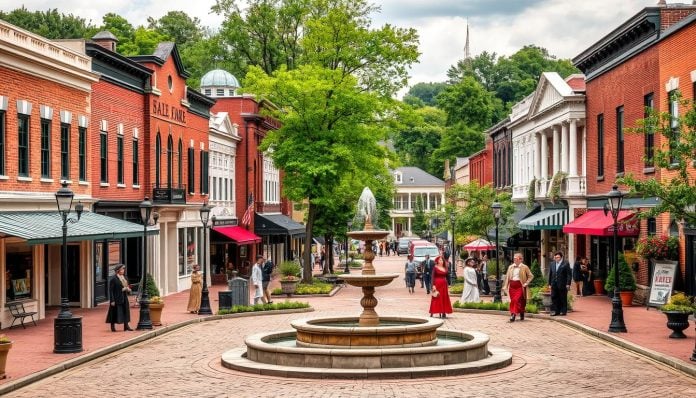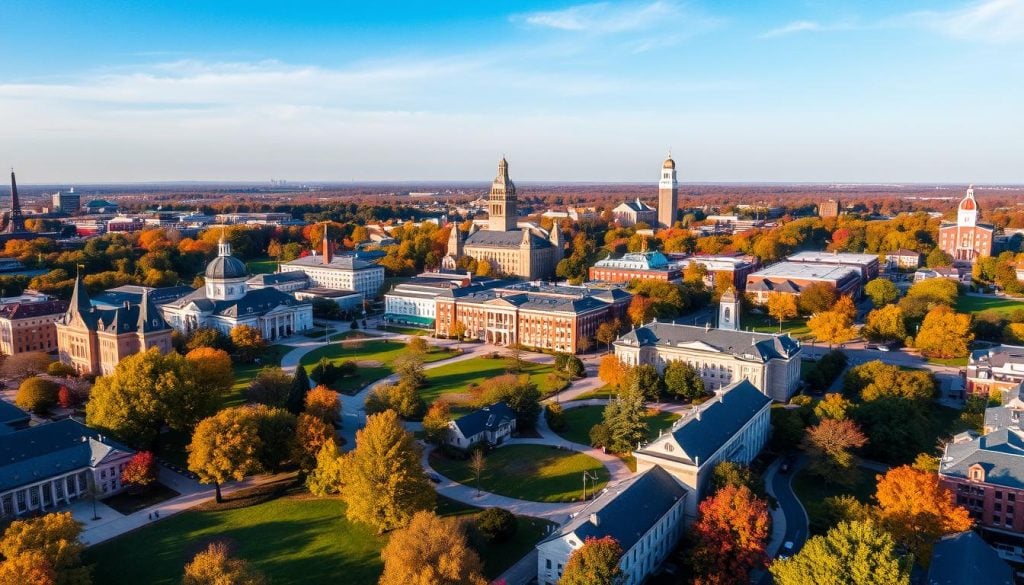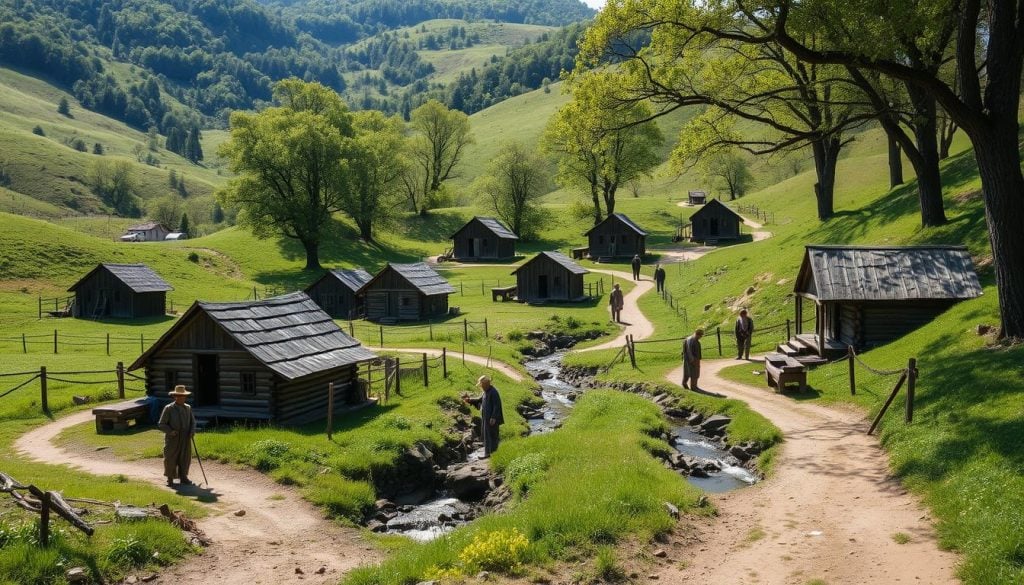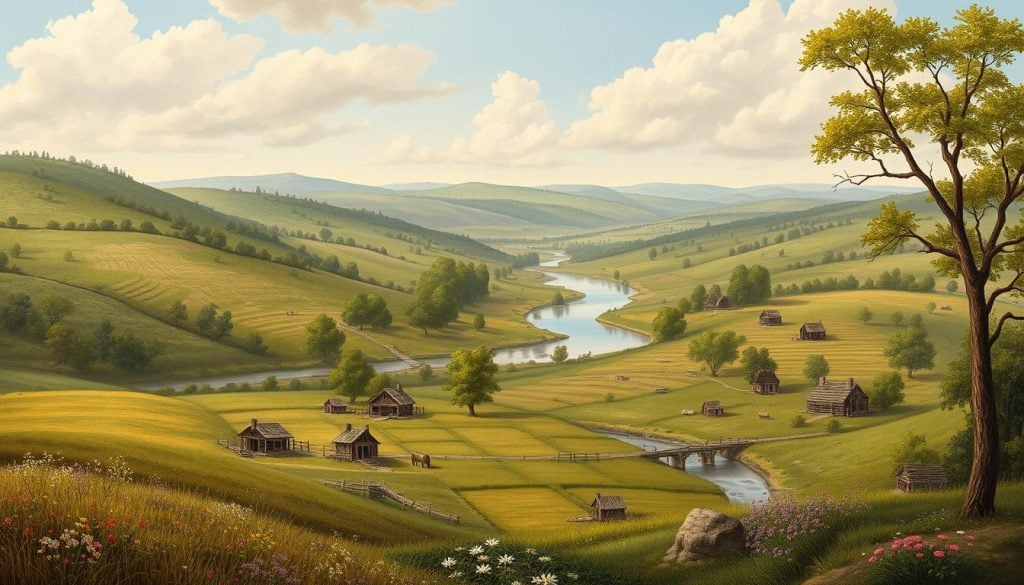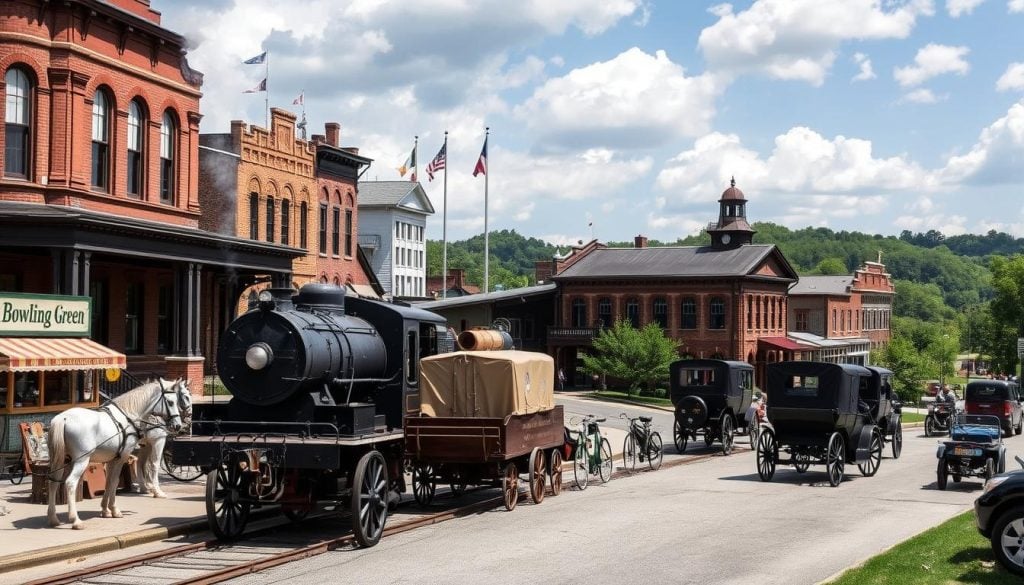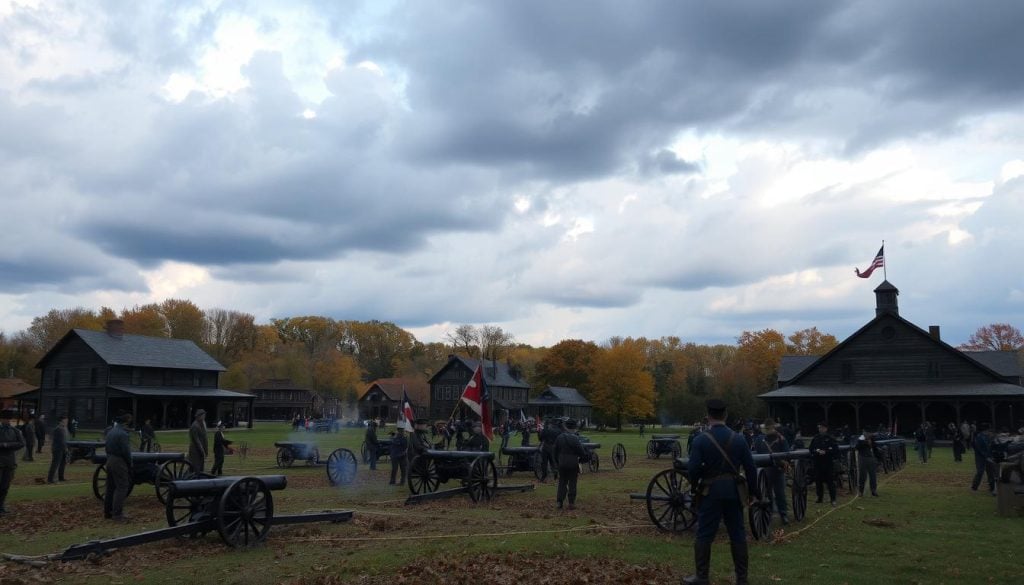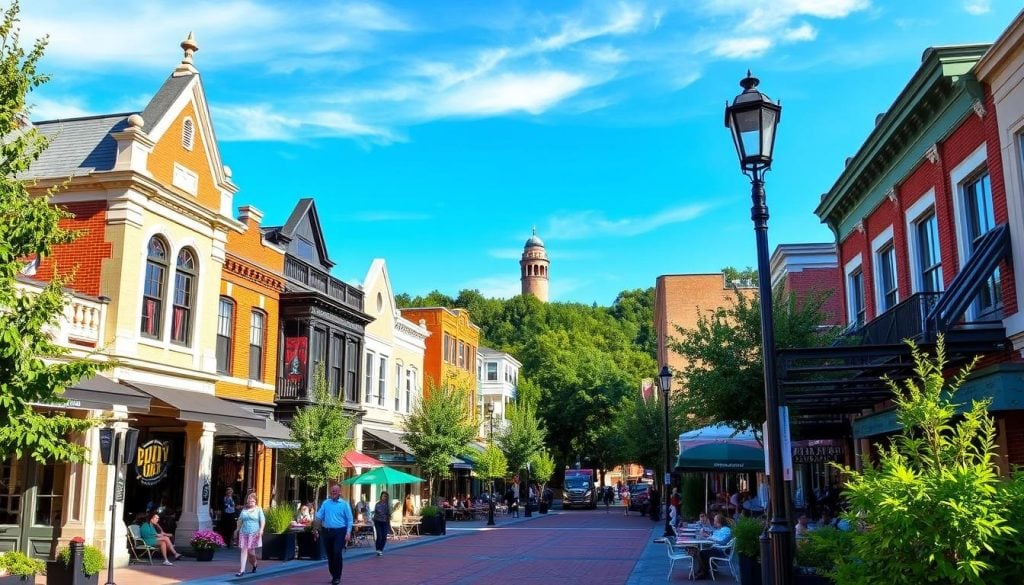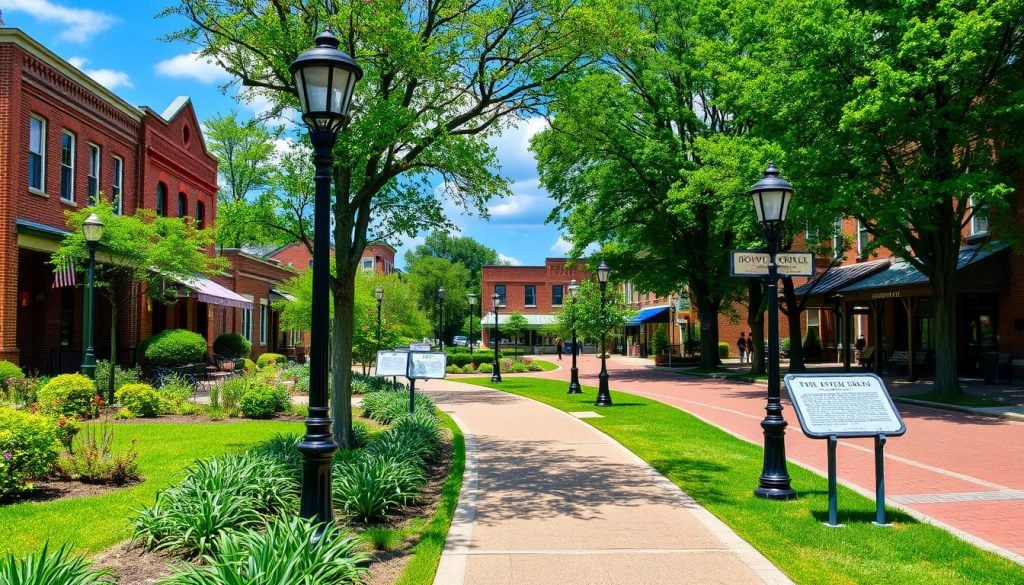Ever wondered how a small settlement turned into a bustling city? This journey into Bowling Green’s history reveals its amazing change. You’ll learn about the events and stories that made it what it is today. From its early days to its key role in wars and economic growth, Bowling Green’s history is full of interesting stories and important people.
Starting in the late 1700s, Bowling Green’s story begins. We’ll take you through time to see how it grew and changed. It’s now the third-largest city in Kentucky, and we’ll explore what this means for its future.
Introduction to Bowling Green’s Historical Significance
Bowling Green is a key spot in Kentucky’s history. It was important for its location and early settlers. The town started as the first seat of Warren County right after Kentucky became a state in 1792. This made Bowling Green a crucial place.
The town’s story began with pioneers looking for new chances. They turned the area into a lively community. This history shows how Bowling Green became what it is today.
Over time, Bowling Green grew with new buildings and important events. These changes linked the town to big stories across the region and country. They showed how Bowling Green made a mark and kept going through tough times.
What is the history of Bowling Green?
The story of Bowling Green is a tale of early settlers and their struggles. It began in the late 1700s with changes that shaped the area. Explorers looking for good land set the stage for a growing community.
Early Settlements and Pioneers
McFadden’s Station was founded in 1778, marking a key moment in the area’s history. It drew many pioneers to Bowling Green, who wanted to farm and build homes in Kentucky. These hardworking people faced many challenges but worked hard to make the land their own.
The Impact of the Revolutionary War
The Revolutionary War had a big impact on Bowling Green. After the war, veterans and freed people came to this area for a fresh start. This brought more settlers, boosting the economy and making the community stronger.
When Kentucky became a state in 1792, this growth helped build a strong settlement. It set the stage for Bowling Green’s future.
Bowling Green Origins and Founding
The story of Bowling Green starts with its early days at McFadden’s Station. This place was a key spot for new settlers moving into Kentucky’s wild lands. It offered shelter and was a starting point for those wanting to explore the unknown.
McFadden’s Station: The Beginning
McFadden’s Station was crucial in starting Bowling Green. It was a safe place that drew people looking for a better life. Here, settlers first came together, setting the stage for a community.
The Naming of Bowling Green
The name Bowling Green has deep roots in American history. At McFadden’s Station, settlers planned to create a town. They named it “Bolin Green” after Bowling Green Square in New York City, a place of revolution. This name honors the past and celebrates the spirit of pioneers who built the town.
Bowling Green Historical Background
Learning about Bowling Green’s history helps us understand its growth. A key event was the creation of Warren County in 1796. This was a big moment for the town, especially since Bowling Green became the county seat soon after.
Establishment of Warren County
Warren County’s creation set the stage for Bowling Green’s future. Leaders quickly saw the need for a strong government and infrastructure. They built important public buildings to support the growing population.
The Role of Robert and George Moore
Robert and George Moore were key figures in the early days. They gave land for public buildings, helping the town grow. Their efforts led to the building of a log county courthouse by 1798. This showed their dedication to Bowling Green’s future.
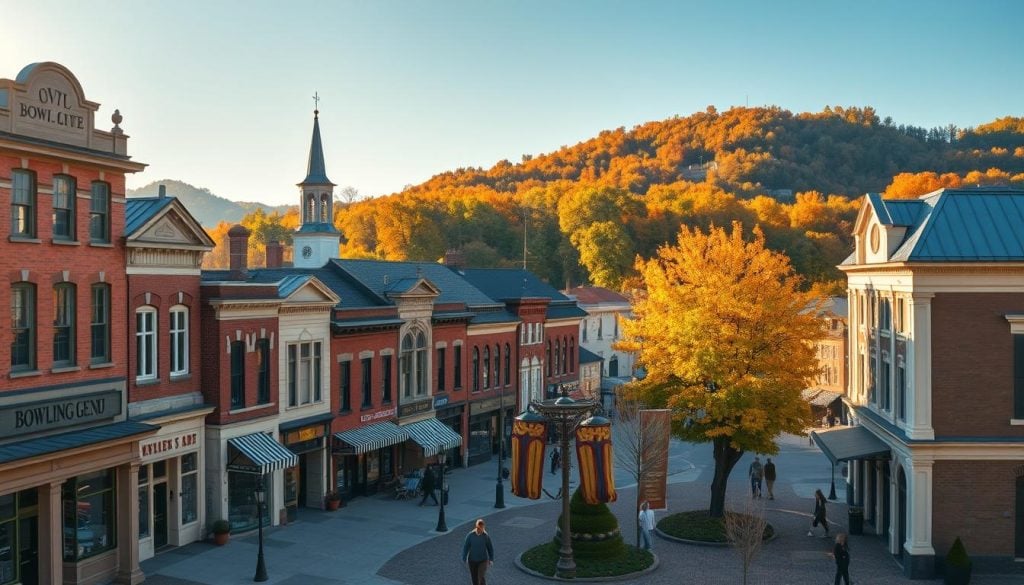
Bowling Green’s Development History
In the 19th century, Bowling Green went through a big change. This change made it a key part of the region’s commerce. The town drew in many businesses and services, boosting the local economy.
Commercial Growth in the 19th Century
The 19th century saw Bowling Green grow like never before. New businesses like banks, newspapers, and taverns popped up. These places offered important services for both locals and travelers.
This growth helped the economy and made life better for the people. Entrepreneurs took advantage of the demand for goods and services. This made Bowling Green a lively commercial center in the area.
Transportation Advancements and Their Effects
Transportation was key to Bowling Green’s growth in the 19th century. New roads and stagecoach lines made it easier to get to other places. This connected Bowling Green to bigger trade routes, making it a key spot for moving goods.
Thanks to this, the town became a big part of the agricultural trade. It became a crucial link between farmers and markets all over the region.
Bowling Green Evolution Through the 19th Century
The 19th century was a big change for Bowling Green. It was a time of growth and new beginnings. The town saw changes in business and education that shaped its future.
The Growth of Businesses and Infrastructure
Entrepreneurs saw Bowling Green’s potential in the 19th century. They invested in the town, making it a key business spot. Warehouses and railroads brought in merchants and craftsmen.
Local people took advantage of these changes. They opened shops and services for the growing population.
The Rise of Educational Institutions
As Bowling Green grew, so did its focus on education. Schools like the Southern Normal School became important. They offered great education and were places for social and cultural events.
This mix of business growth and education made the town thrive. It created a strong and united community.
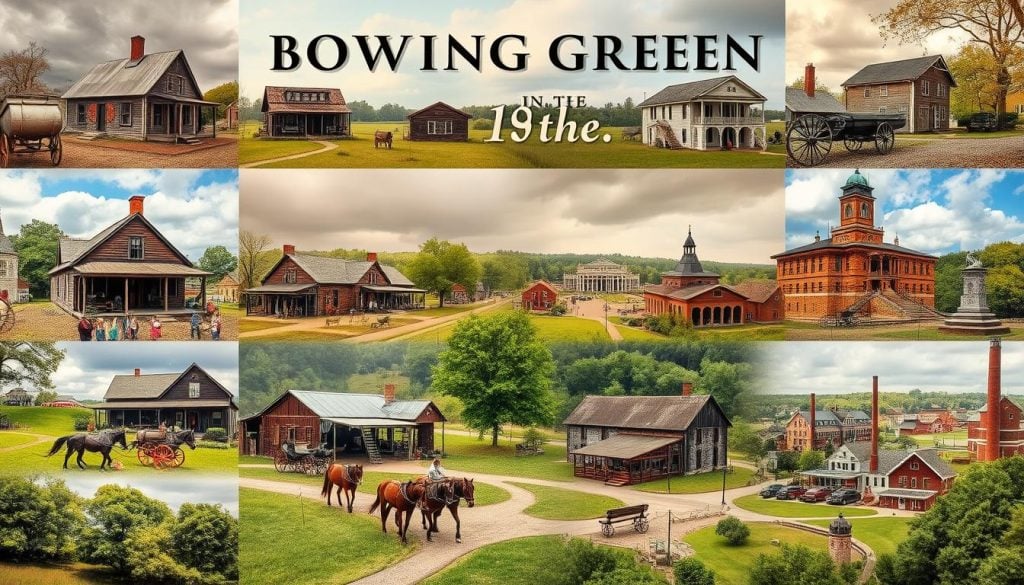
| Key Developments | Description | Impact |
|---|---|---|
| Business Growth | Formation of various local businesses. | Increased employment and economic stability. |
| Infrastructure Investment | Development of warehouses and rail connections. | Enhanced trade and mobility. |
| Educational Expansion | Creation of institutions like Southern Normal School. | Improved educational access and literacy rates. |
Key Historical Events in Bowling Green
The story of Bowling Green’s past is filled with key moments that shaped its identity. During the Civil War, the city was a crucial spot for military actions. These events set the stage for its growth and recovery.
Bowling Green during the Civil War
Bowling Green was a key spot for both Union and Confederate forces. Its location made it important for military actions. The war brought hard times but also made the community stronger.
Post-Civil War Economic Expansion
After the war, Bowling Green changed a lot. It grew economically thanks to its good location for transportation. This led to more jobs and people moving there. The city became a big center for manufacturing, showing it could adapt and succeed.
Modern-Day Bowling Green: A Blend of History and Progress
In today’s world, Bowling Green stands out as a city that mixes its deep history with new advancements. You can see historical attractions in Bowling Green and feel the city’s lively growth. It has iconic sites that show its past.
Historical Landmarks and Attractions
Bowling Green has landmarks that share its history. Some key sites are:
- Fountain Square Park: A place where locals and visitors meet for events and festivals.
- National Corvette Museum: Honors American car innovation and the Corvette sports car.
- Bowling Green War Memorial: Pays tribute to local veterans’ sacrifices.
Bowling Green’s Role Today
Now, current significance of Bowling Green is clear as an economic center. It’s home to Western Kentucky University, adding to its education scene. The GM Corvette Assembly Plant is a big job creator and industry leader. This mix of old and new makes Bowling Green special, attracting both locals and tourists.
How to Explore Bowling Green’s Rich History
Exploring Bowling Green’s history is easy and rewarding. By visiting historical sites, you connect with the community’s past. You’ll learn about its growth and evolution.
Visiting sites like the Barren River lets you see where history was made. Walking through downtown and checking out museums is a great way to learn more. Guided tours add stories and context, making history come alive.
Resources for Learning More
For a deeper dive into Bowling Green’s history, check out local resources. Historical societies and libraries are full of knowledge. They offer programs, archives, and books on key events and figures.
These resources help you understand and appreciate Bowling Green’s history more. They make learning fun and engaging.
| Resource | Type | Location |
|---|---|---|
| Bowling Green Historical Society | Historical Society | 301 W Main St, Bowling Green, KY |
| Barren River Area Museum | Museum | 601 State St, Bowling Green, KY |
| Western Kentucky University Archives | Archive | 1906 College Heights Blvd, Bowling Green, KY |
Conclusion
Bowling Green’s history is a story of strength and growth. It shows how the city changed over time. From early settlements to big events, each period added to the city’s character.
Learning about Bowling Green’s past helps us value its life and culture more. The stories of its first settlers and tough residents live on in its streets, parks, and buildings. These stories link the old days with today’s life.
Today, Bowling Green’s history is still important. By visiting its landmarks and learning about key events, you see how the city’s past shapes its present. This history connects people and gives them a sense of belonging.

































